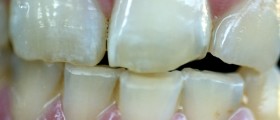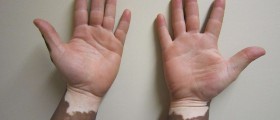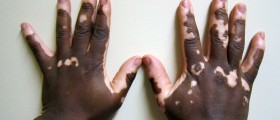
Genetics of Skin Color Variation
Melanin is a pigment found in almost every organism which gives our skin color. The differences in skin color are genetic, but how they first came to be is not altogether clear. Skin color adjusts to various amounts of sun rays, temperature, exposure to skin cancer risk factors, and frostbite. When it comes to melanin, it is produced by an enzyme tyrosinase, and is responsible for coloring of our hair, eyes, and skin. There are lighter and darker forms of melanin and the amount of each a person carries is determined by inherited genes. Melanin is also accountable for the quantity of ultraviolet rays that enter the skin. Further, a gene termed KIT ligand has been linked to variations of skin tone among African Americans, while melanin produces up to 20 percent of contrast between African and non African individuals. A gene variant A326G is present in more than 80 percent of Asian and European populations, while in African individuals it is found in less than 10 percent of instances. An allele termed agouti signalling peptide is also associated with skin tone differences and is mostly found in Europeans, followed by Asians and Africans. A 2-SNP haplotype has been found to be responsible for skin color variations within the European population. The lighter skin color in Europeans has been linked to Thr111Ala allele as well as to Ser192Tyr, while it is seldom found in any other ethnic group. The His615Arg allele on the other hand is only located in East Asian individuals. Numerous other alleles, such as ATRN 25, rs88547, and Arg163ln, are only found in East Asians and the different variations of the alleles contribute to the distinctions in their skin tones. In addition, the mutations of TYR, SLC45A2, TRP1, and OCA2 genes are responsible for pigment deficiencies resulting in albinism.
Evolution of Skin Color
Various research studies confirmed that around the time when humans and chimpanzees became different species, which was about 5 million years ago, the human ancestors had fairly light skin that was covered by dark hair. The hair eventually ceased to exist allowing the skin to perspire, while the skin color had become darker to protect itself from damaging sun rays. Around 1 million years ago, when the human ancestors developed into the Homo sapiens everyone had the same receptor protein as the African population has today. As most people lived in tropical climates the lighter skin tone was unnecessary. The Homo sapiens started to move away from the African soil around 100, 000 years ago which resulted in the change of their skin color. Partly because of the lower sun rays intensity, partly because they required clothing as the weather was colder, the skin color had become lighter. Also, the ancestors of both the Europeans and the Asians went through the same changes but their gene variants produced different shades of light skin. On the other hand, there are additional theories suggesting that different nutrition of individuals who migrated from Africa to the North resulted in skin color changes.
Irregular Pigmentation
Irregular pigmentation is characteristic of all individuals regardless of their ethnic background. Discoloration or appearance or freckles are forms of irregular pigmentation. Irregular pigmentation occurs when there is a disturbance in melanin production. In case there is an abundance of melanin produced the affected individual experiences darkening of the skin. Various hormonal changes can also lead to discoloration. Different types of wounds or skin irritations can lead to darkening of the skin as well. Also, older individuals who have had years of unprotected sun exposure are prone to developing dark spots on the skin.
Sun Tanning and Skin Color
When it comes to skin exposure to the sun, melanin controls the amount of radiation that penetrates the skin and in turn protects it from sun damage. When skin is exposed to the sun it strives to protect itself by producing more melanin. The higher the amount of melanin the darker the skin appears to be. Also, the more time one spends in the sun the more melanin is produced. The process is the same for indoor tanning. As the individuals with more melanin are better protected from the adverse effects of ultraviolet rays, they too are at a lower risk from developing skin cancer. Individuals of European descent are almost 10 times more likely to suffer from a form of skin cancer than Africans. On the other hand, people with darker skin color produce less vitamin D and in turn suffer from different types of health problems. Some experts believe that the presence of melanin in the skin inhibits vitamin D production, while others disagree and support alternative theories. Be the case as it may, it is a known fact that individuals with lighter skin tones produce more vitamin D than those with dark skin.

















Your thoughts on this
Loading...